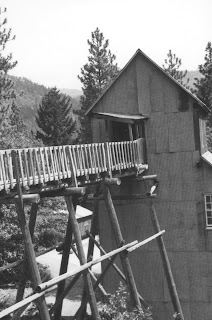
When most people think about San Francisco, they envision a cosmopolitan, urban place with majestic, tall buildings, culturally diverse neighborhoods and manmade landmarks like the Golden Gate Bridge and Coit Tower.
And they would certainly find all of that during a visit.
But the City by the Bay has another—more natural—side. Out on the northwestern edge of the city is the Golden Gate National Recreation Area, which includes a starkly beautiful place known as Lands End.
Located near the Cliff House (at the end of Geary Street), Lands End is best experienced with a hike along the main Coastal Trail, which begins from a parking lot adjacent to the ruins of Sutro Baths. The mile-and-a half trail retraces the cliff top route of the long-gone Ferries and Cliff House Railroad.
The railroad, which once carried San Franciscans from the downtown to Sutro Baths and the wilds of Lands End, operated from 1888 to 1904, when it was largely replaced by the city’s electric trolley system.
The old rail-bed trail skirts Point Lobos and looks out over the entrance to the San Francisco Bay and, in the distance, the Golden Gate Bridge. It offers some of the city’s most spectacular views of the Marin Headlands (to the north), the bridge and the bay.
Bordering the trail are dozens of cypress and pine trees, many of which have been flattened and molded by the nearly constant ocean winds. Growing as high at 80-feet, the cypress and pine trees were transplanted from Monterey into the area in the late 19th century by city landscapers yet have become signature trees for the region.
Lands End is also home to a handful of birds and other wildlife that manage to survive in such an unusual environment. According to the National Park Service, as many as 140 species of birds, 41 mammals and 14 amphibians and reptiles can be found in the area.
Additionally, the area serves as a refueling stop for migrating warblers, grosbeaks and nuthatches, which, according to Ariel Rubissow, author of “Cliff House & Lands End: San Francisco’s Seaside Retreat,” use its forests to replenish their energy reserves before trying to cross the Golden Gate channel to reach the Marin headlands.
The park service also notes that Lands End is home to several endangered species including the California redlegged frog and the bumblebee scarab beetle.
From the trail and several overlooks you can see the crumbling, steep and unstable cliffs below as well as the treacherous rocks poking out of the bay waters that once seemed to reach out and snag the bows of passing ships.
In the 19th and early 20th centuries, the San Francisco headlands claimed dozens of ships. The remains of a handful can still be seen near Ocean Beach. Rubissow has written that before the invention of the fog horn, sea captains listened for the loud barks of the sea lions on nearby Seal Rock to guide them away from the rocks.
On higher ground above the Coastal Trail is a parallel track that can serve as a loop trail for those heading back to the parking lot at Sutro Baths. This second trail winds through West Fort Miley, the remnants of a military reservation that once served as part of the country’s seacoast defense system.
While little remains of the fortifications, hikers can still find old gun emplacements as well as a monument commemorating the USS San Francisco, which fought at Guadalcanal in 1942. Additionally, the area boasts picnic tables, grills and restrooms.
For more information about the Golden Gate National Recreation Area go to http://www.nps.gov/goga.





